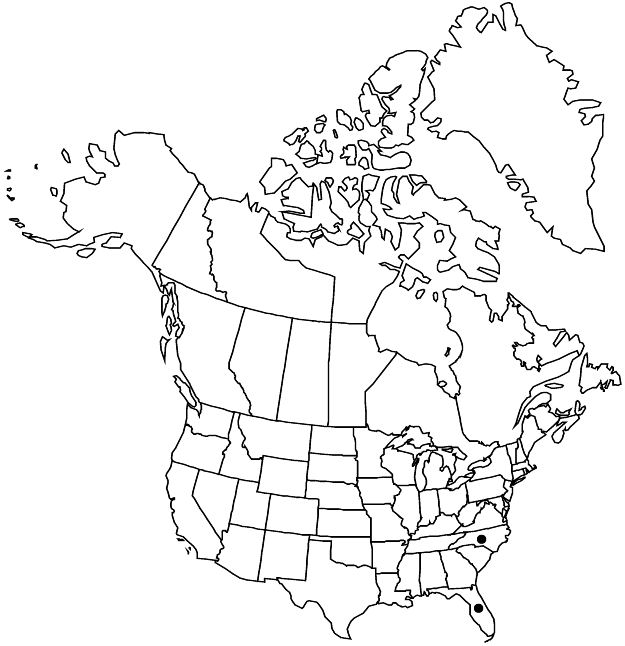Crocanthemum nashii
in J. K. Small, Man. S.E. Fl., 879. 1933.
Herbs. Stems from caudices and horizontal rootstocks, erect to ascending, 20–35 (–41) cm, stellate-pubescent. Leaves cauline; petiole 1–2 (–3) mm; blade oblanceolate-elliptic to lanceolate-elliptic, 15–30 (–38) × 3–6 (–8.4) mm, surfaces stellate-tomentose, without simple hairs, lateral-veins slightly to moderately raised abaxially. Inflorescences terminal, thyrses; chasmogamous flowers 1–8 per thyrse, cleistogamous 8–40 per thyrse, flowering 1–3 months later than chasmogamous. Pedicels 3–8 (–10) mm; bracts linearlanceolate, 1–3.2 × 0.2–0.6 mm. Chasmogamous flowers: outer sepals linear, 1–3 × 0.3 mm, inner sepals ovate-elliptic, 3.5–5 × 2.7–3.7 mm, apex acute; petals broadly cuneate, 6–9.5 × 3–6.5 mm; capsules 2-valved, 3–4.8 × 2.4–3.8 mm, stellate-pubescent distally. Cleistogamous flowers: outer sepals linear, 0.5–1.2 × 0.5 mm, inner sepals ovate-elliptic, 1–3.4 × 1–2.3 mm, apex acute; capsules 2-valved, 3–4 × 2.4–3.5 mm, stellate-pubescent distally.
Phenology: Flowering Mar–Jun.
Habitat: Xeric sand-pine scrub and oak scrub, on stable maritime dunes, on inland sandhills
Elevation: 0–100 m
Distribution

Fla., N.C.
Discussion
Crocanthemum nashii and C. arenicola are the only species in Crocanthemum with stellate-pubescent ovaries and capsules; C. nashii is unique in having two-valved capsules. It was discovered in New Hanover County, North Carolina, in 1997, disjunct some 540 km from the northernmost Florida populations. The uniformly gray-green foliage, thyrsoid inflorescence, and often patch-forming habit render it unmistakable within its range. Plants with simple hairs mixed with stellate hairs on the calyx were named Helianthemum thyrsoideum.
Selected References
None.